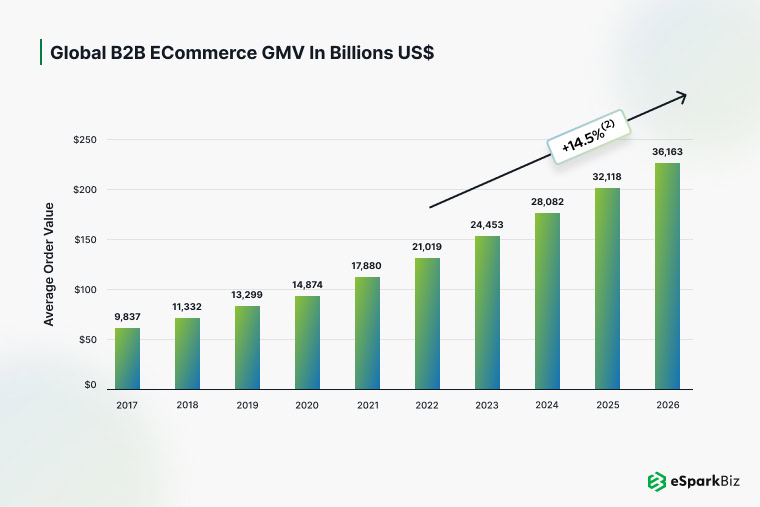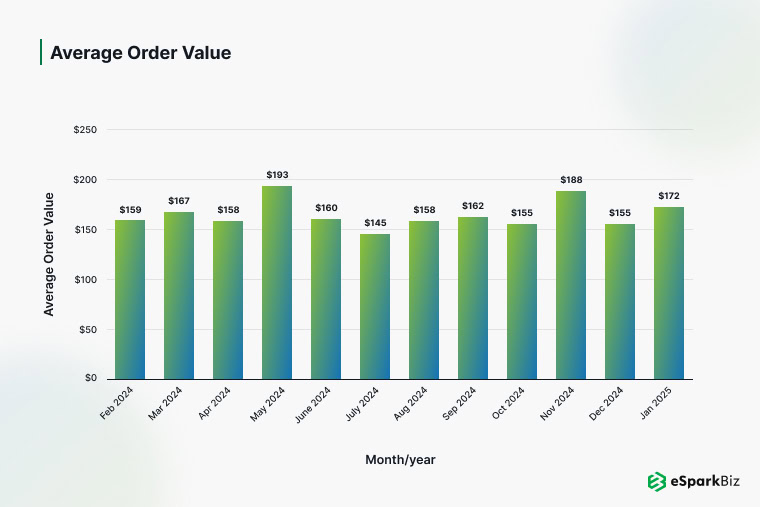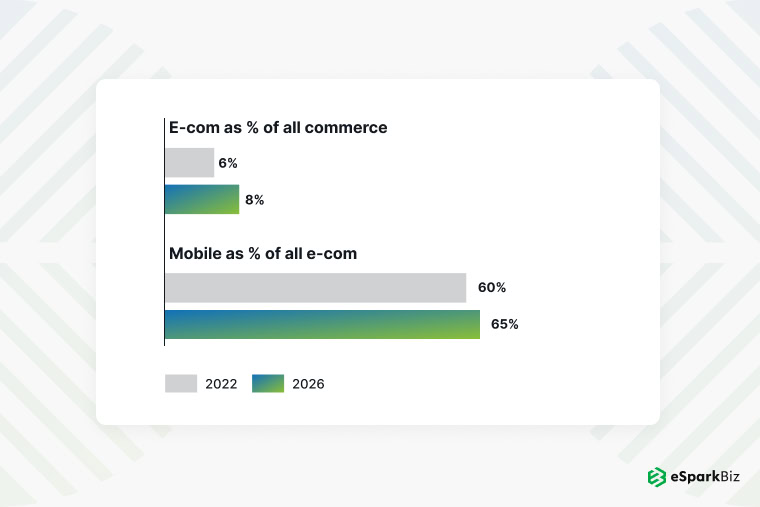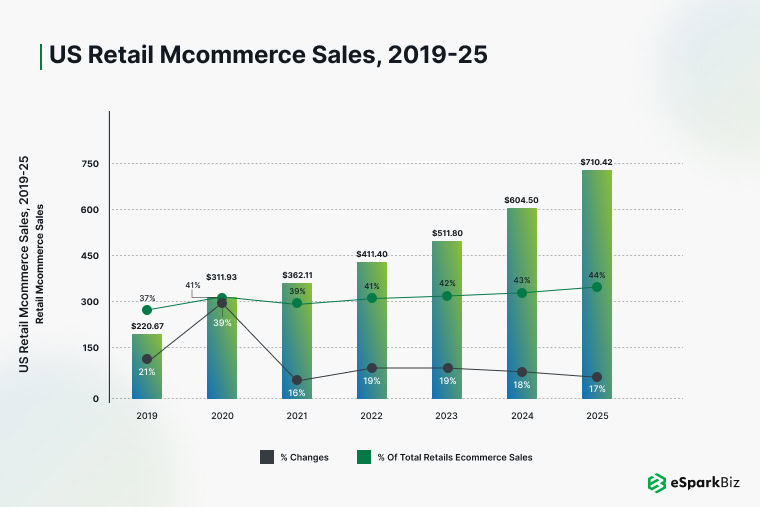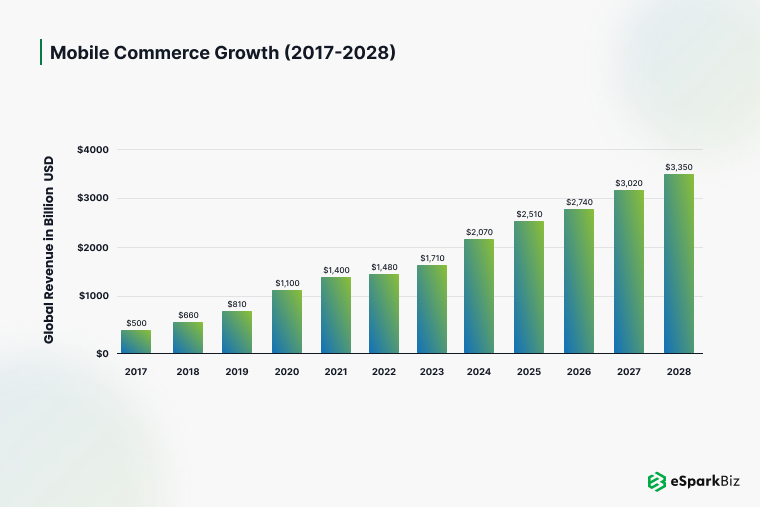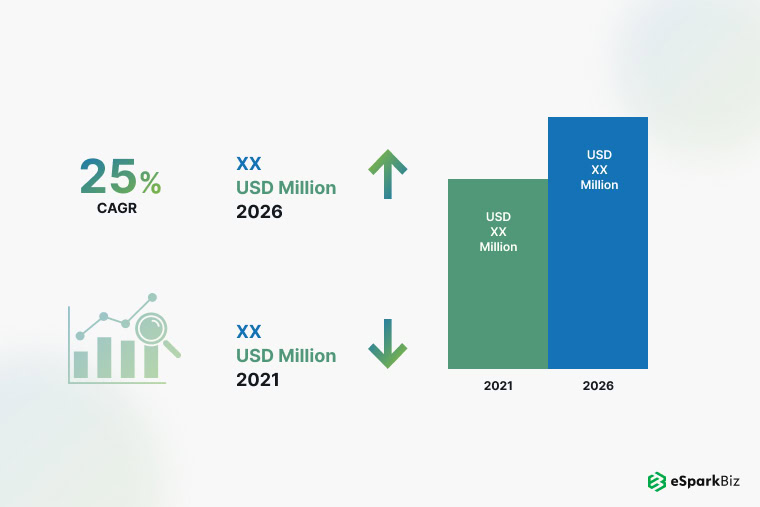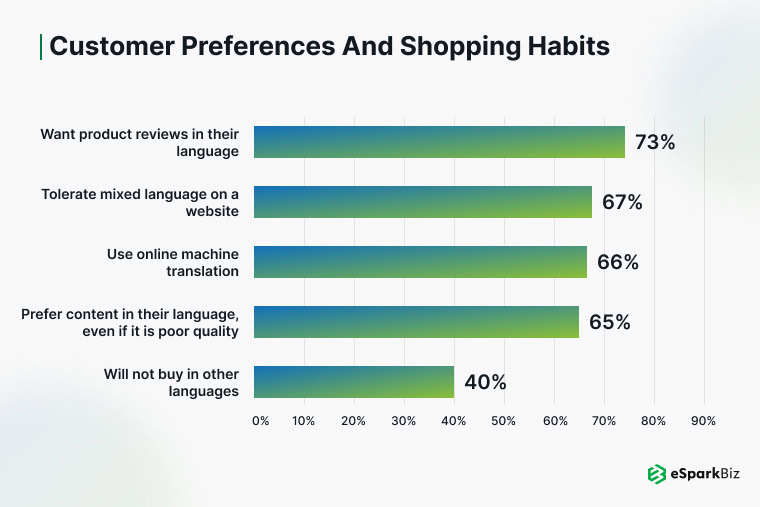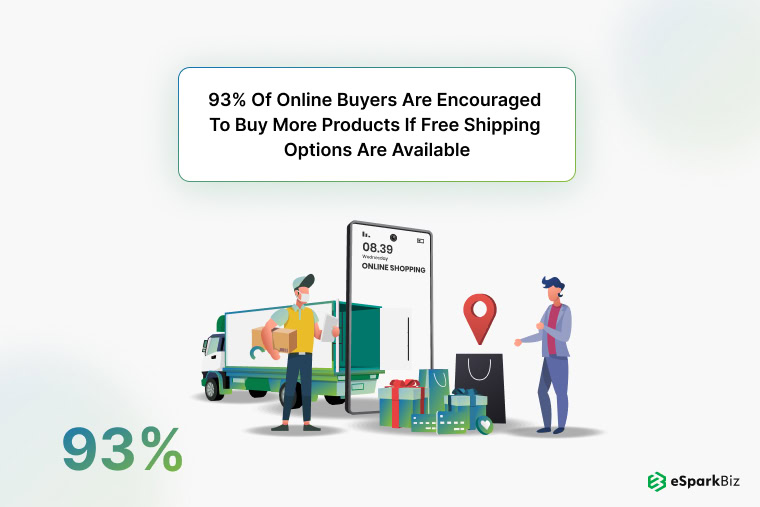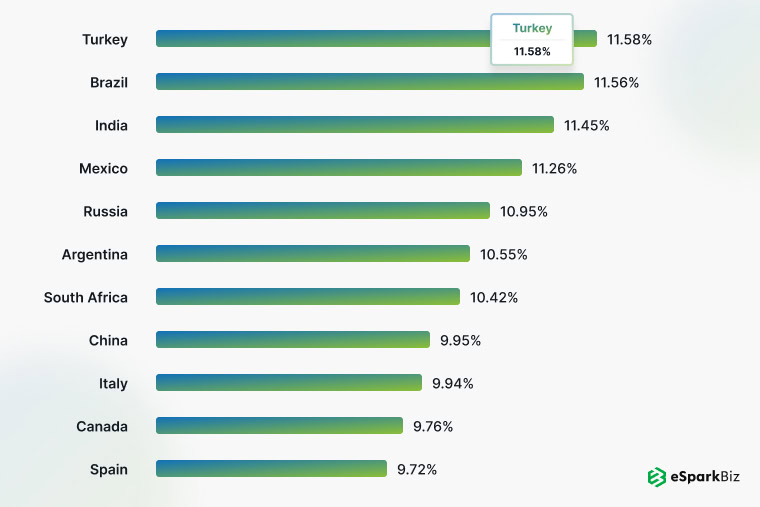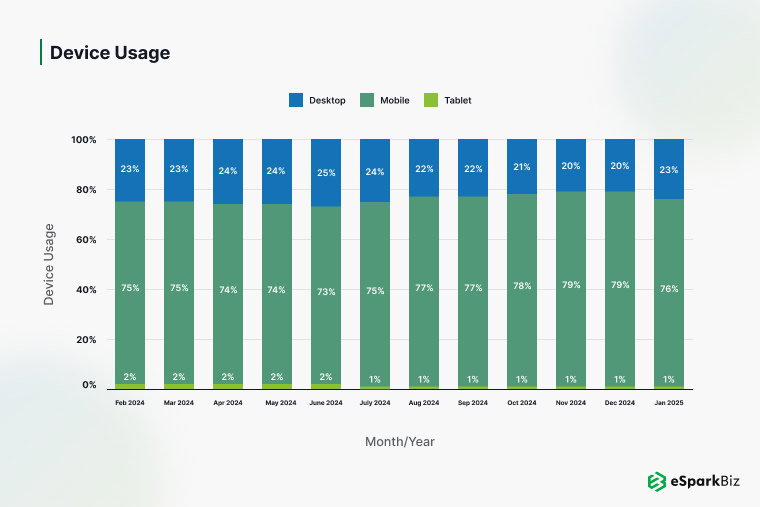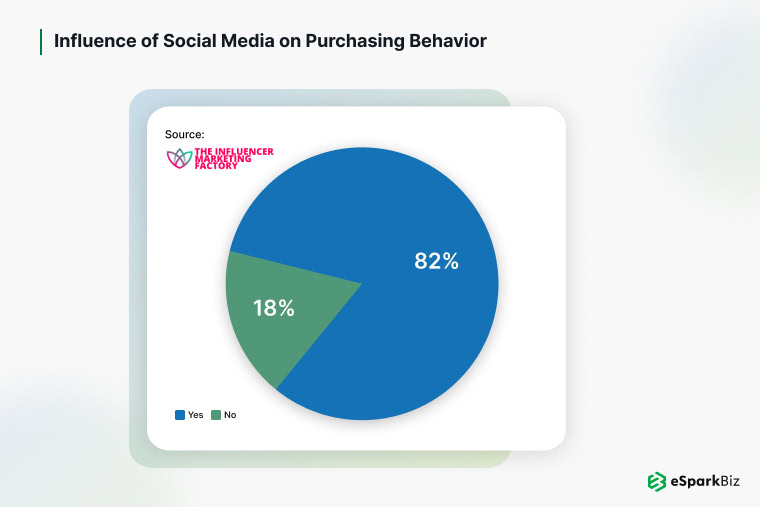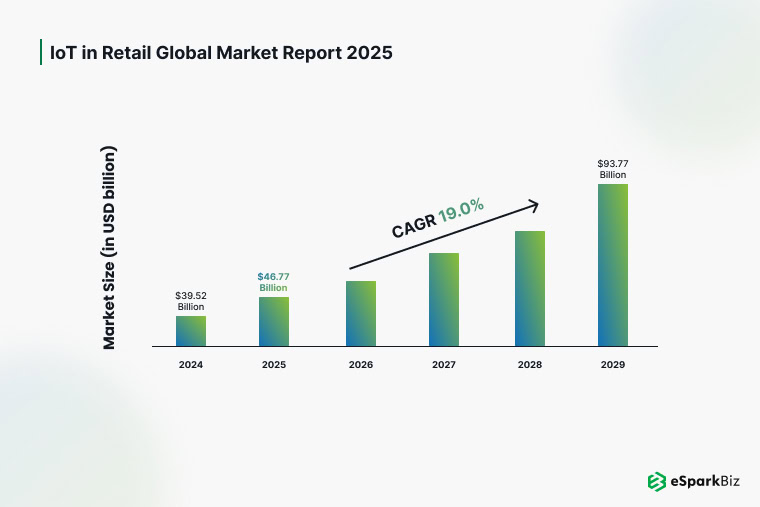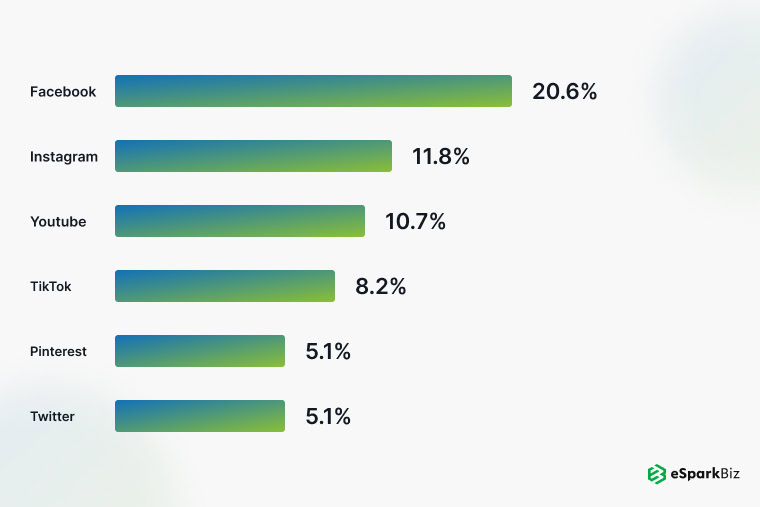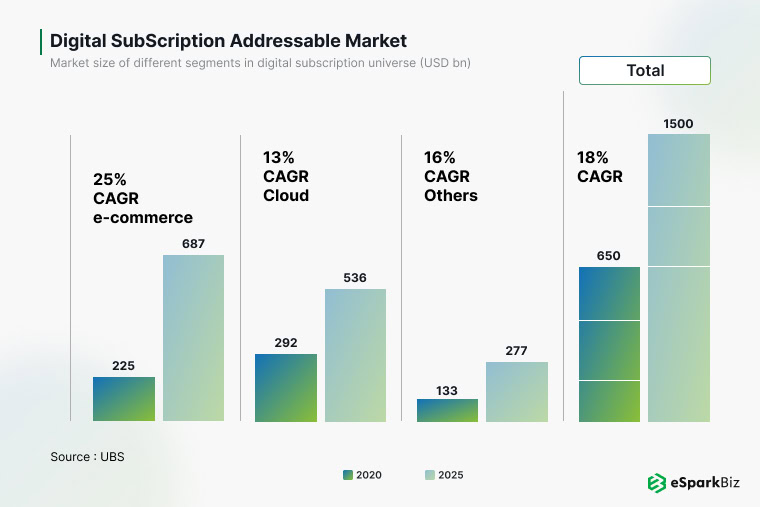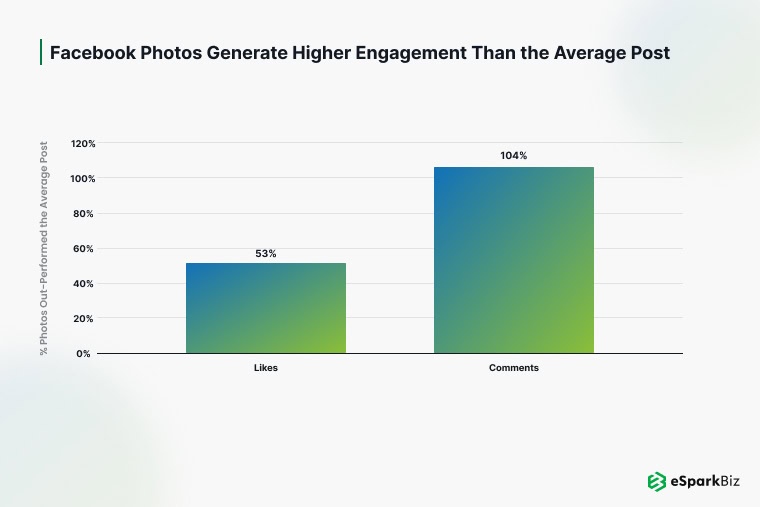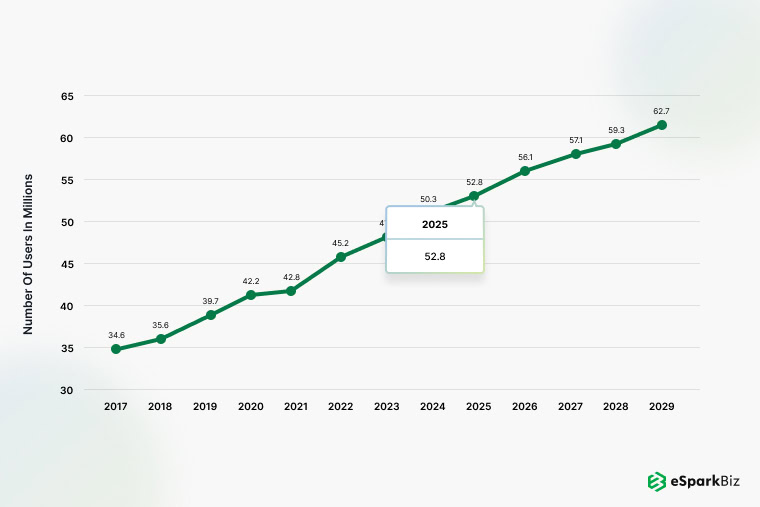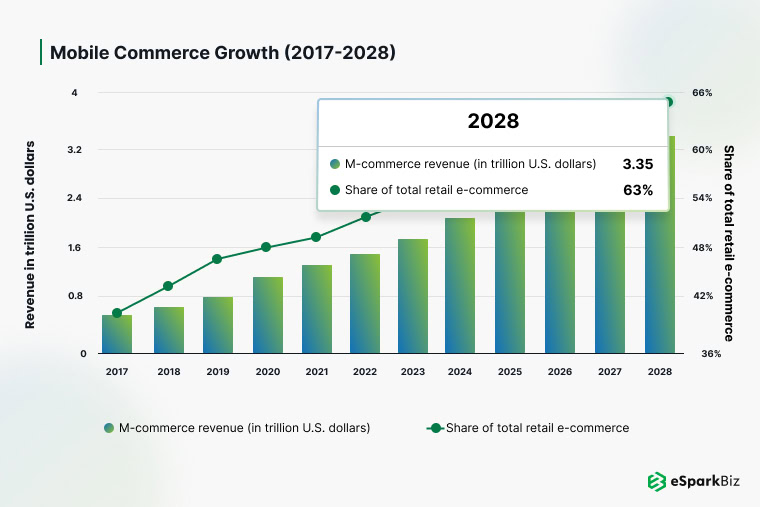Quick Summary :- This guide provides complete information about eCommerce app development statistics that will transform your digital retail strategy for 2025. Read about the modern customer experience transformations led by industry leaders who use AI innovations and mobile commerce trends. Our analysis provides practical findings that your future eCommerce operational strategy needs.
eCommerce app development has shifted retail into a new business paradigm that transforms market structure to create successful commercial operations. Just not this, eCommerce sales globally will break all previous records by reaching $6.56 trillion in 2025.
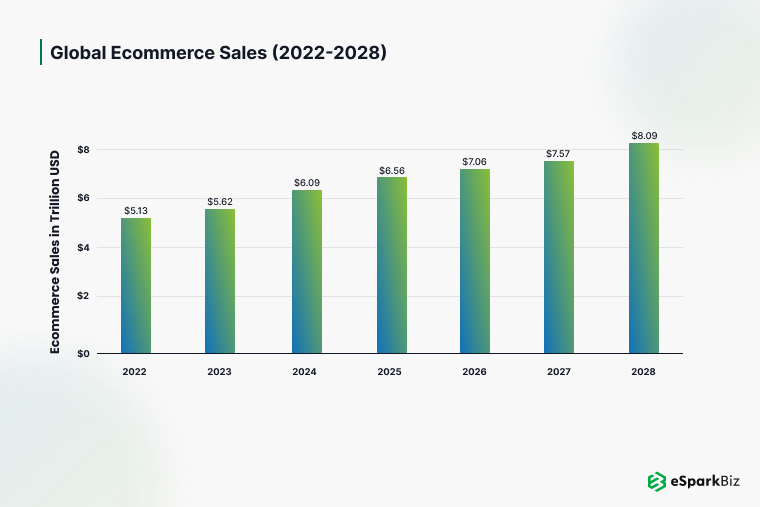
These remarkable eCommerce app development statistics reveal a total change in how consumers approach their buying habits. Besides, today’s consumers expect optimal digital shopping experiences with personalized interactions and effortless access.
The data says it all: consumers now complete their purchases through mobile devices because they choose smartphones as their main interface to reach your brand.
Let’s dive into the crucial eCommerce App Development Statistics to understand the vital facts and get started on implementing the best practices to achieve eCommerce success.
The Future of Digital Retail: Key eCommerce Statistics for 2025
Now, let’s learn everything that needs to be known about the current and some of the future development statistics related to digital global growth, AI innovations, mobile eCommerce trends, and changing consumer behaviors.
Global eCommerce Growth
The retail world is undergoing a significant digital transformation because of evolving eCommerce practices. The U.S. market will grow its online sales to exceed $1.3 trillion in 2025, with a 0.9% increase from 2024.
The staggering figures present substantial business potential for companies to enhance their digital reach.
1. Global e-commerce sales have an extraordinary projection of $7.4 trillion during 2025.
2. Online sales in the United States are projected to reach $1.38 trillion in 2025, indicating strong market expansion possibilities.
3. The industry research shows that eCommerce will grow at 14.5% annually between 2022-2026 surpassing traditional retail expansion.
4. Retail fundamentals experience a fundamental shift through digital transformation because eCommerce will control 22.6% of total retail sales by 2027.
5. The digital marketplace continues to grow exponentially because more than 28 million eCommerce stores exist worldwide.
6. The data shows that consumer behavior is changing because 21% of retail purchases will happen online in 2025.
7. Online shoppers from 52% of the worldwide population actively purchase international goods, which leads to enhanced expansion opportunities.
8. The digital wallet and mobile payment systems will control 60% of retail transactions by 2026.
AI and Personalization in eCommerce
9. The requirement for personalization driven by Artificial Intelligence serves as a business necessity as worldwide 80% of customers expect for customized shopping experience.
10. Using AI-based recommendation systems enables companies to achieve conversion rate boosts of 15-20%, which results in solid financial benefits.
11. Businesses must address changing customer preferences since 81 percent of present-day shoppers need personalized shopping interactions.
12. Your company can use AI technology in customer support to earn a share of $11 billion in annual savings while providing superior service quality.
Mobile Commerce Statistics
Mobile commerce (m-commerce) is expanding through the market at an unmatched speed.
13. 78% of all eCommerce traffic will originate from mobile devices in 2025.
14. A market projection indicates mobile commerce will become the digital marketplace leader by reaching $745.16 billion in sales by 2030.
15. Mobile shoppers represent a lucrative market segment because they spend an average of $172 on each purchase.
16. All eCommerce traffic today operates through mobile devices since they account for 77% of total activity.
17. 50% of customers abandon their shopping carts when the checkout takes more than 30 seconds.
18. The worldwide app download market will continue its explosive growth from 121 billion in 2019 to exceed 300 billion by 2025.
19. Research indicates mobile payments will become mainstream by 2026 since 65% of consumers plan to adopt this method.
20. The marketplace of mobile purchases will command 48.2% of mobile app revenue generation in 2025.
21. Mobile coupon businesses will expand globally by 56.5% in 2025.
22. The m-commerce market will approach $710 billion worth of sales in 2025.
23. In 2025, retail businesses will generate 44% of their total online sales through mobile devices.
24. Mobile commerce continues to expand rapidly because analysts predict sales will reach $3,350 Billion by 2028.
Also Read: 75+ Mobile App Usage Statistics to Plan Successful App Development
eCommerce App Development Statistics
A modern eCommerce app demands businesses to implement current technology standards which include AI and AR/VR along with voice search capabilities. These eCommerce app development statistics will establish new directions for future retail application development.
25. The global eCommerce market shows AR-enabled applications will capture a CAGR growth of 25% in its total share by 2026.
26. The implementation of AI technology enables businesses to reduce their application development expenses by 30%.
27. About 62% of companies either possess an application or actively work on app development.
Impact of Chatbots and Automation
The adaptive capabilities of AI Chatbots and automation systems have both intensified operational efficiency levels and decreased operational expenses.
28. The use of AI Chatbots currently takes 80 percent of customer inquiries and gives prompt responses to improve customer service delivery.
29. Your service efficiency reaches new heights when AI chatbots process 80% of customer inquiries.
30. Customers expect immediate availability of service because 63% now need continuous support.
31. Research shows that 62% of customers prefer to interact with chatbots for their support requirements.
Customer Preferences and Shopping Habits
The deciding factors that shape consumer purchase behavior are convenience and personalization in the evolving market. Growing mobile shopping trends require eCommerce businesses to focus on convenience and personalization for their operations.
32. Research shows that 78% of customers pursue customized shopping interactions, which represents a key element for business achievement.
33. About 40% of consumers will not make online purchases on websites that do not match their language.
34. Your revenue directly suffers from website loading speed because 75% of potential sales disappear when pages take too long to load.
35. Mobile apps serve as the main research platform for shoppers since 49% of consumers use them to decide what to buy.
The Role of Data Privacy and Security
Data security has become more important for consumers as incidents of data breaches increase in frequency. All businesses need to follow privacy regulations such as GDPR to prevent potential risks.
36. The reputation of your brand remains at stake since 40% of consumers will leave their trusted brands if their data privacy trust is broken.
37. The global cybersecurity market expects exponential growth up to $212 billion during 2025 as the need for data protection continues to increase.
Consumer Behavior Insights
38. Online shopping has become a deeply embedded habit since 34% of consumers buy something new online each week.
39. The Internet removes all geographical barriers because 52% of online shoppers actively seek international products.
40. Free shipping increases the average cart value since 93% of customers spend more money without shipping costs.
41. The market demands eco-friendly brands because 78% of consumers actively look for sustainable products that provide competitive benefits to businesses.
42. Consumer loyalty programs remain the number one shopping priority for 58.7% of consumers.
43. 53.2% of customers choose stores that provide free shipping when making their buying decisions.
44. 81 percent of online shoppers thoroughly research products before making a purchase.
45. Live commerce has continued to rise in popularity since 40% of U.S. consumers have already adopted this interactive shopping format.
Omnichannel Shopping Trends
46. Your business stands to gain from strategic optimization since global eCommerce conversion rates stay at 2.17%.
47. Research indicates that digital and mobile wallet payments will handle more than fifty percent of online transactions in 2025.
48. Your market spans worldwide territory because 52% of present-day online shoppers search for international products beyond geographical constraints.
49. The digital market allows your business to scale operations because 2.77 billion shoppers participate in global digital shopping.
Why shop online: Top Reasons Consumers Do So!
50. Online shoppers base their purchase decisions on easy return policies, as 32.4% of them say it is a critical trust factor.
| Reason | A percentage of internet users report this factor as a meaningful reason to shop online among them. |
| Free delivery | 53.2% |
| Coupons and discounts | 40.6% |
| Customer reviews | 33.2% |
| Simple online checkout | 28.6% |
| Next-day delivery | 28.5% |
| Loyalty points | 24.9% |
| Social likes and comments | 23.0% |
| Eco-friendly credentials | 18.7% |
| Interest-free payments | 17.0% |
51. The Food & Beverage sector demonstrates high conversion rates of 4.03% which demonstrates substantial untapped potential in this market segment.
52. Food & Beverage stands out by achieving an exceptional 6.27% rate of customers in December who added items to their cart.
53. The Turkish market represents an attractive opportunity due to its 11.58% annual growth rate of eCommerce.
54. During peak events, Amazon sells over 300 million items swiftly with each purchase taking place at a rate of 100,000 per minute.
55. Social shopping has evolved from an experimental status because 68% of Americans buy products weekly through social media platforms.
56. Millennials buy based on the products they discover on social media networks at a rate of 70%.
57. Mobile transformation has hit your customer base because smartphones and tablets carry 76% of all eCommerce traffic.
58. When it comes to eCommerce platforms, WooCommerce dominates as the leading solution with 39% market control.
59. The sales performance of finance innovation continues to rise as BNPL transactions will reach $450 billion in 2025 and are expected to surpass $800 billion by 2028.
60. The massive traffic numbers at Amazon reach an average of 2.84 billion visitors per month which should serve as your benchmark for traffic goals.
61. Amazon enjoys 12.92% of global eCommerce visitors.
62. Amazon brand owners recorded a 22% annual increase in 2023, so companies should capitalize on existing marketplace ecosystems to boost their business.
63. Social commerce represents 18.5% of online sales at present, and experts predict further expansion will occur.
64. Social discovery leads to immediate mobile purchases because 82% of consumers end up buying products directly from their mobile devices after making social discoveries.
65. TikTok has provided Gen Z shoppers with a direct purchase option since 68% of them prefer to make their purchases directly from the platform.
66. Shopping cart abandonment poses a major challenge at 70.19% which companies need to address for substantial revenue opportunities.
67. The growth of businesses is threatened by fraud as projected losses will surge 141% from $44.3 billion to $109 billion between 2024 and 2029.
68. Voice commerce will reach an important milestone when it reaches $80 billion globally in 2025.
69. The AI recommendation system at Amazon delivers 35% of the total sales for the company.
70. The use of mobile payments has experienced significant growth because Apple Pay gained 50% more users during its first three years on the market.
71. The market value of IoT in retail will exceed $93.77 billion by 2029 at a projected 19.0% Compound Annual Growth Rate, which enables physical-digital integration transformation.
72. The adoption rate of social commerce in Thailand and Colombia exceeds 91 percent, while China remains behind.
73. The online shopper population in the United States will increase to 333.5 million people by 2029.
74. Social shoppers in the United States choose Facebook as their primary platform for buying items since it holds 20.6% of the market share.
75. Research predicts AI adoption in eCommerce will reach 80% in 2025, which proves the need to implement AI solutions right now for better competitiveness.
76. The use of personalized experiences will standardize across eCommerce businesses with 90% adoption in 2025.
77. In 2025 social commerce will generate 20% of total eCommerce sales so businesses should implement social features without delay.
78. Your strategic plan needs recurring revenue models because subscription commerce shows an annual growth rate of 18%.
79. Retail eCommerce growth originates from emerging markets, with Turkey, Brazil, India, and Mexico producing 11% CAGR or higher.
80. Small businesses can boost their revenue by 30% by offering customers various payment methods.
81. Small business payment performance remains low because 16 percent of them provide customers with no more than three payment methods.
82. The development of mobile apps generates customer loyalty because 60% of new users tend to repurchase from the same platform.
83. Mobile devices generate the most eCommerce sales and is expected to account for 59% of the global market in 2025.
84. When CRM integration works smoothly, the customer journey becomes 85% less complex.
85. Visual content performs better since posts with pictures receive 53% more likes and generate 84% more click-through rates.
86. Users tend to take specific actions after viewing Instagram ads because 87% of people follow up with action.
87. Product-checkout optimization remains essential because it leads to a 35% boost in conversion rates.
88. Amazon delivers FBA shipments through their logistics system at 70% lower costs than premium shipping services.
89. Sponsored product campaign advertising on Amazon proves more cost-efficient than other options, with a price range of 13% to 79% less for each click.
90. Digital adoption in the UK shows rapid growth, so experts forecast 62.1 million eCommerce users in 2025.
91. The selection of platforms determines how a business can scale up since Shopify operates 30% of the world’s top million websites.
92. WooCommerce dominates platform adoption by having 3.1 million companies, which exceeds the combined numbers of Shopify, Squarespace, and Wix.
93. Mexico offers two remarkable opportunities because it ranks as the fifth fastest-growing eCommerce market worldwide while holding the position of the second-largest in Latin America.
94. The worldwide eCommerce marketplace shows expanding growth patterns with an $11.4 trillion sales projection for 2029.
95. The market continues to expand as eCommerce sales will generate $707.90 billion in 2025.
96. The UK market shows steady growth in user numbers which may reach 52.8 million users in 2025 before surpassing 60 million users by 2029.
97. Search engines serve as the starting point for 42% of British consumers who initiate their buying journeys.
98. The growth of mobile commerce in the UK will exceed £100 billion during the period from 2025 to 2026.
99. The market continues to become saturated as the number of eCommerce sites worldwide reaches more than 27 million.
100. The number of eCommerce sites expanded dramatically from 9.2 million to 28 million between 2019 and 2025.
101. Shopify continues to grow its market penetration by actively serving more than 700 million customers worldwide.
102. Amazon maintains the largest customer base worldwide since over 310 million shoppers chose their platform in 2024.
103. Social commerce has gained popularity because 56% of UK consumers make purchases directly through social media platforms.
104. TikTok Shop experienced explosive growth in the UK as the seller base doubled to 200,000 businesses while daily sales increased by 93 percent.
105. The shopping activity on Instagram leads to weekly purchases because 44% of its active users buy items on this platform each week.
106. Instagram Stories act as a conversion tool because 50% of viewers end up making website purchases after discovering products through Stories.
107. The UK social commerce market is expected to grow to almost £8.8 billion within the next five years.
108. Mobile eCommerce expansion shows no signs of slowing down, as global revenue projections indicate it will reach $3.35 trillion by 2028.
109. The value of human interaction is significant because 43% of customers choose to speak with human agents rather than use chatbots.
Conclusion
The statistical data shows more than just numbers because it paints a clear picture of your upcoming market position. Your customers are moving online while expecting seamless experiences across all marketing channels and interactions without limits of hardware boundaries. You must act now.
These eCommerce app development statistics highlight that you need a corporate plan which directs capital investments toward emerging markets. If you are a determined leader you will consider these market predictions to respond fast and forecast upcoming changes within your sector. The question for your organization is not if you will adopt AI and personalization with smooth payment systems but when you will implement these solutions.
Do you want to convert these insights into practical business results? Get in touch with our team so we can develop a sustainable digital commerce strategy to achieve lasting business expansion.
Frequently Asked Questions
What form will eCommerce take in 2025?
Digital shopping will grow to $7.4 trillion from worldwide consumers who use their mobile phones and AI systems for personalized shopping.
How vital is mobile commerce to the success of eCommerce businesses?
Having mobile-optimized operations can lead to successful online stores because 78% of online transactions will happen on smartphones in 2025.
How does AI technology support the development of eCommerce applications?
Artificial Intelligence improves how buyers interact with stores by tailoring item suggestions and giving better support which makes shopping better and brings in more sales.
How can businesses use social platforms for online selling purposes?
Businesses can use Instagram, TikTok and Facebook to generate direct sales if they link their online store to these platforms and work with online influencers for live shopping events.
What development technologies are transforming online buying in the year 2025?
Major technology trends for 2025 include Artificial Intelligence, Augmented & Virtual Reality, blockchain, voice shopping systems, and Progressive Web Applications.
